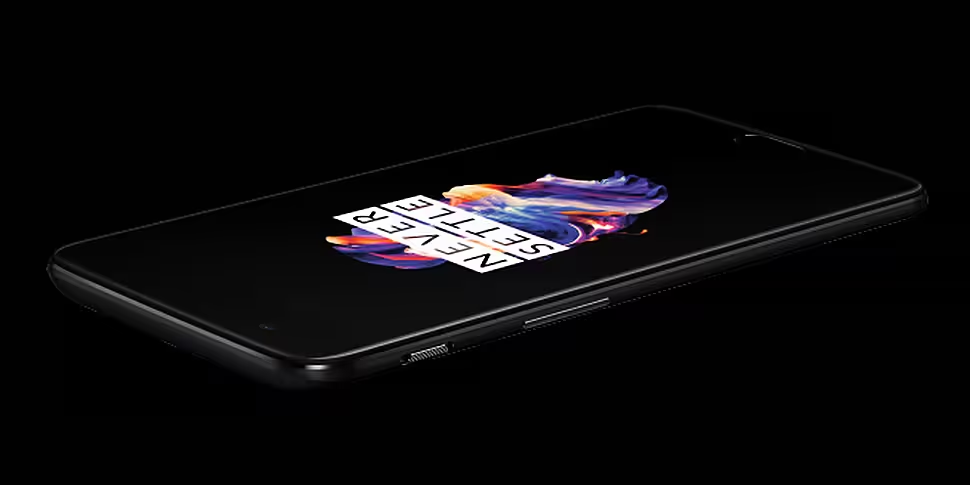The OnePlus 5 is not a budget smartphone. It is a smartphone which is competing directly with the iPhone and Samsung’s Galaxy S8 smartphones. It is cheaper than either of its two more well-known competitors, but still represents a significant outlay of €500. As a result, the OnePlus 5 needs to be much better than its predecessors, which offset some failings by offering decent hardware at a budget price.
OnePlus has successfully built a huge online following for its brand, and many tech reviewers have been won over by the plucky underdog’s ability to produce a smartphone which can compete with those from the industry’s leading players, with a fraction of the resources available to them.
In reality however, OnePlus is just one of a range of brands owned by BKK Electronics, a large conglomerate owned by a Chinese billionaire known as the “Chinese Warren Buffett.”
The company pools a lot of its research and development costs, meaning OnePlus has a much greater chance of being able to product a smartphone of this quality than another startup of similar size.
So is the OnePlus 5 worth all the hype?
Despite it’s name, the OnePlus 5 is the company’s sixth smartphone, and it is easily its most accomplished to date.
From a design perspective, it looks a lot like pretty much every other thin-and-light smartphone on the market. That said, the Midnight Black model I reviewed is beautifully built and felt incredibly sleek. Only a few years ago, producing a phone like this would have been only possible for the likes of Apple or Samsung.
The matte aluminium finish on the rear is great for preventing fingerprints, and the only blemish on the entire body is the bulge of the dual lens camera enclosure on the top of the back cover — but it’s not a big problem.
As always, OnePlus promises bleeding-edge hardware to power the smartphone. It has the fastest and most powerful chip from Qualcomm, paired with an industry-leading 8GB of RAM, to provide performance equal — and often better — than an iPhone 7.

It also has an ultrafast fingerprint reader which works really well — though I prefer a rear-mounted sensor to the one under the screen which is what we have here. It has fast-charge technology which will boost your battery quickly, giving you “a day’s power in half an hour.”
In an era of 2K and 4K displays on smartphones, the 5.5in Full HD display on the OnePlus 5 may seem below par on paper, but in reality you don’t notice the difference and everything looks great.
The camera
The one area where OnePlus smartphones in the past have trailed the flagship smartphones is in image quality.
This time around OnePlus has made a major effort by incorporating a dual camera system accompanied by a specific portrait mode to take advantage of the two lenses. Portrait mode allows you to easily create the increasingly common bokeh effect, where the subject is in sharp focus with the background blurred. The system works well, though I did typically have to take multiple shots to get it right, rather than getting it right first time.
Overall however this is a big improvement over any of OnePlus’ previous smartphones in terms of image quality. It still doesn’t match up to the likes of the Galaxy S8, iPhone 7 or Google Pixel in terms of image quality, but it is not too far behind them.
In terms of software, what you get is pretty much standard Android with a couple of light OnePlus additions. The result is a very nice experience which will be familiar to anyone who has used an Android smartphone before. One new addition of note is a Reading Mode, which turns the entire screen to grayscale and combined with a blue light filter, provides a similar experience to what you would get on an e-reader.
As with all smartphones, everything that I have said already cannot be judged without knowing how much you are paying for phone. The OnePlus 5 with 6GB of RAM and 64GB of storage is available for €500, while the model with 8GB of RAM and 128GB of storage costs €60 more.
Overall...
So how does that compare to the competition. The iPhone 7 Plus (which has the same size screen) doesn’t come in a 64GB capacity, so you can pay €920 for a 32GB model or €1,030 for a 128GB model. Samsung’s Galaxy S8 with 64GB of RAM will set you back €800.
So the OnePlus 5 is significantly cheaper, but calling it a budget model when it costs €500 is a bit of a stretch. What it is, is a very competitively priced flagship smartphone which offers powerful hardware, a great screen, good software and a decent camera — but which falls just short of its competitors in certain areas.
I really like the OnePlus 5, and for anyone looking to buy a new phone outright, rather than going on a contract, and who wants cutting edge performance, then it's hard to look past the OnePlus 5.









